Thursday 21st May
Hello Wrens
R.E.
Today in RE we are going to be listening to 2 stories from the Buddhist religion. The special religious book for Buddhists is called the Tripitaka (Pali Canon). Please click on the link below to view the stories.
The story of Siddhartha and the Swan and the story of The Monkey King.
Both of these stories focus on being kind to living things. How did the characters in the stories show kindness? Can you think of an example where you or someone you know has shown kindness to another living thing? Can you think of something you could do today to show kindness?
English.
Today we are going to be carrying on with our Beanstalk stories. Again remember you do not have to do all of the story today. Just focus on the next few pictures in your story map. Purvis and Mickey Thompson decided to carry on typing their story.
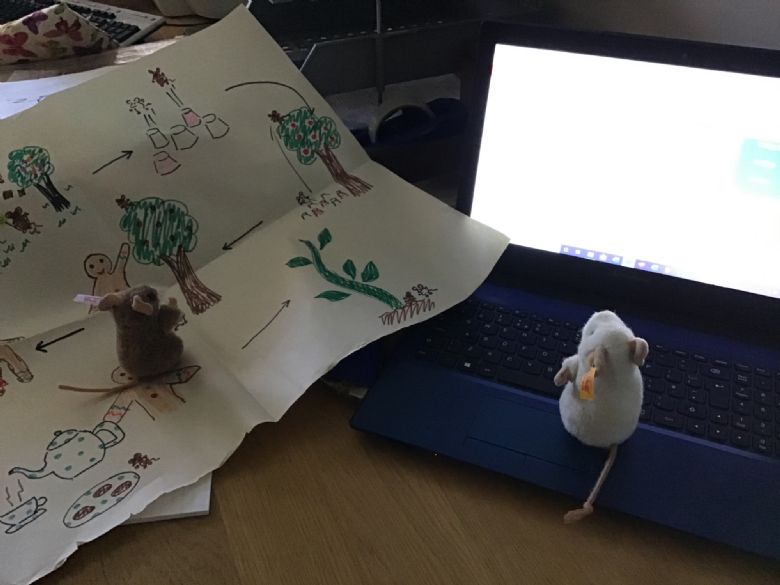
Whee! Mickey Thompson did a really high bounce and landed on top of a huge toffee apple tree. There was no way down. He was stuck! Mickey Thompson began to feel very frightened. Suddenly, they saw a giant gingerbread man with sparkly gumdrop buttons and colourful icing. He helped Mickey Thompson climb down from the tree. Purvis and Mickey Thompson were very pleased to be safe. The gingerbread man offered to show them round Candy Land. They had so much fun. They got to drive jelly bean cars and swim in a lake of lemonade.
Maths.
Reception.
Today we are going to be thinking of sharing things into 2 parts. We call this sharing something in half. When we are sharing in half both parts must be equal. Look at Purvis and Mickey Thompson's apple. They have cut 1 apple into 2 parts. They have cut the apple in half. They each have half of the apple.
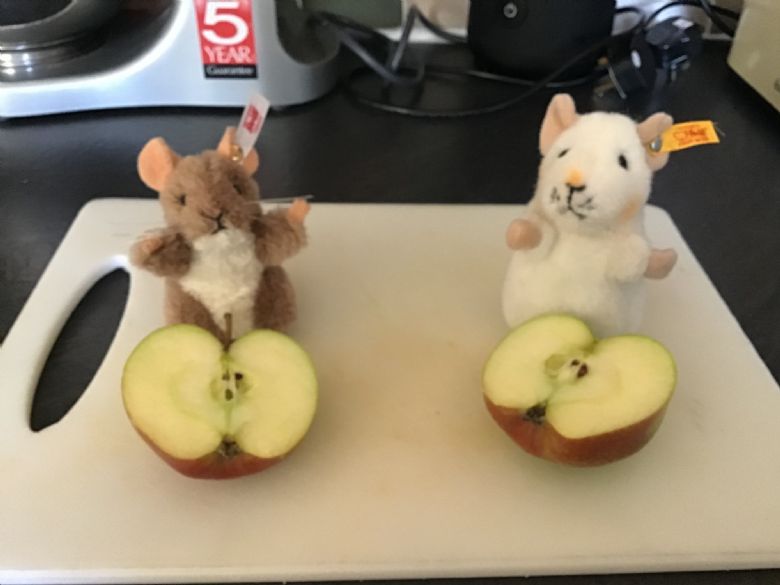
We write a half as  . This means one part out of two.
. This means one part out of two.
Mickey Thompson and Purvis had a look round the house to see how many half things they could find. This is what they came up with. I wonder where the other half of the biscuit went?
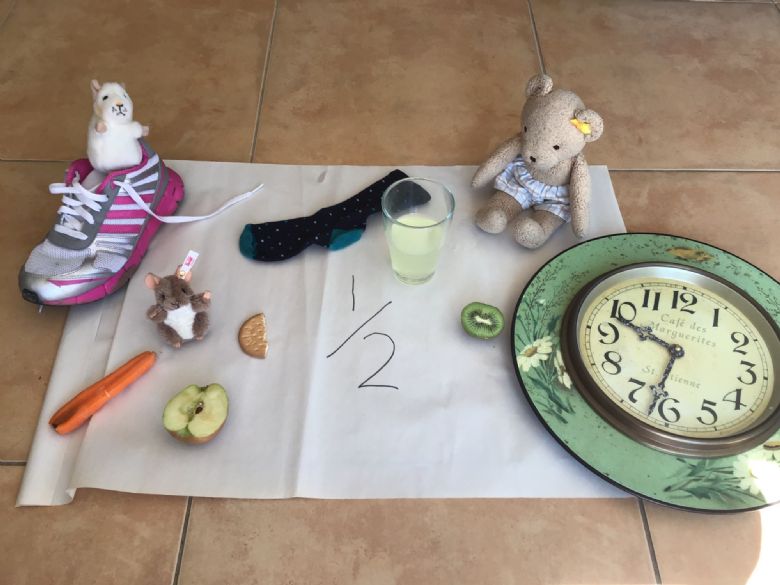
Why don't you have a go to see how many halves you can find around your house? I would love to see a photograph of what you have found.
Activity 1 - below is a sheet with some 2d shapes on it. Ask your grownup to help you carefully cut out the shapes. Then see if you can fold the shape in half so both parts are exactly the same. Does it work for all the shapes?
Activity 2 - using some play-dough or plasticine cut some shapes out using any cookie cutters you may have at home. Can you cut the shapes in half so both parts are exactly the same?
Here are some of the cookie cutters we had at home. Which ones do you think we would be able to cut in half?
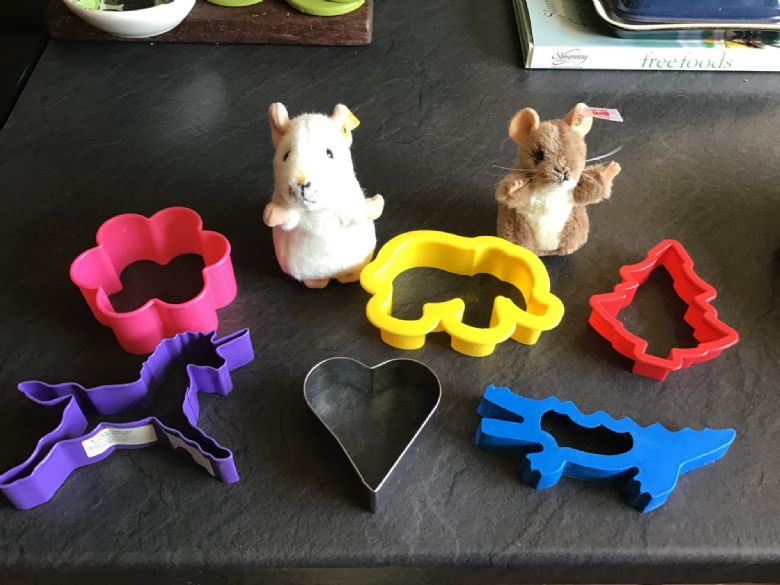
Parents - below is a video explaining how to make play-dough.
You will need:
- 2 cups of flour (any type will do)
- 2 tablespoons of vegetable/sunflower/olive oil (baby oil or coconut oil work too)
- 1/2 cup of salt
- 2 tablespoons of cream of tartar (if you don't have cream of tartar lemon juice also works)
- 1 to 11/2 cups of boiling water (adding in increments until it feels just right)
- food colouring (you can also colour play dough with paint and you can add other things like flavouring to make the play dough smell nice)
- few drops of glycerine (my secret ingredient for stretch and shine!) This is not essential!
Alternatively you could have a go at making, cooking and eating proper biscuit dough to practise making half of shapes. Mickey Thompson says he thinks this is the best plan!
Year 1.
Yesterday we looked at writing division number sentences using arrays.
Purvis and Mickey Thompson have made an array of 10 shells. If they divide (share) them between 2 they will each have 5 shells.
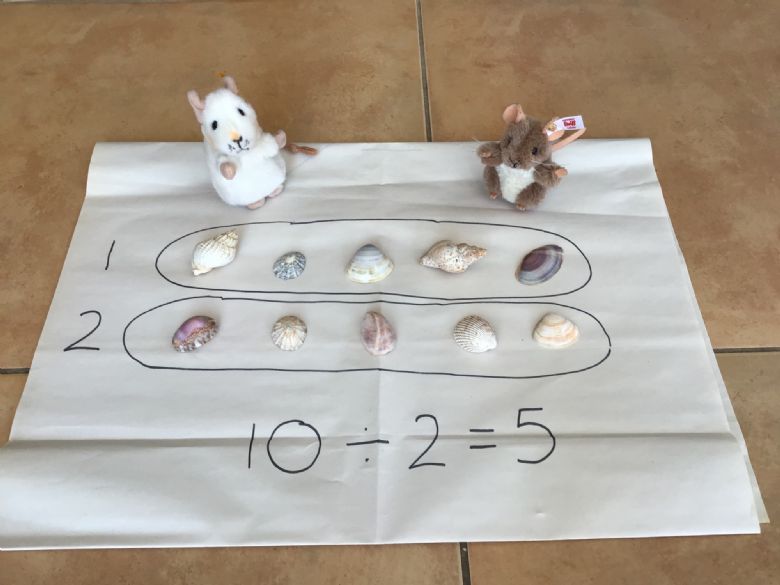
However, we can ask this question another way. Instead of saying how many will they have if we share between 2 we can ask how many groups of 2 are there in 10?
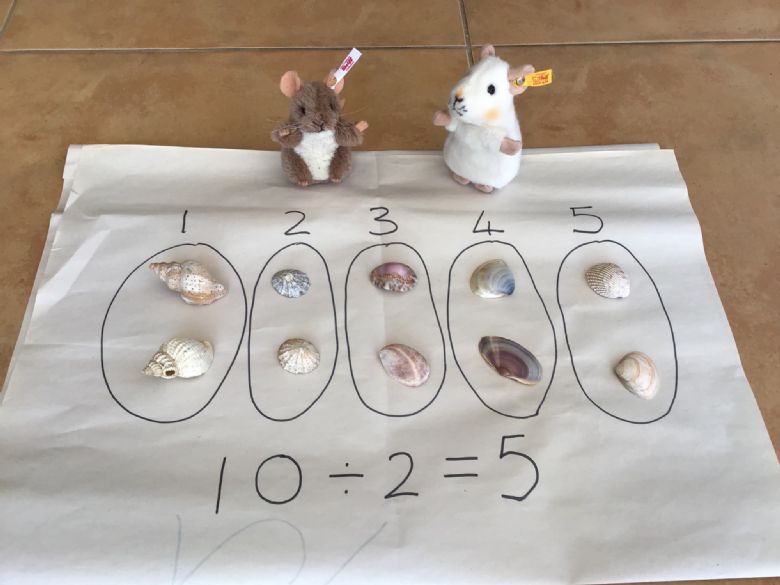
The answer is the same. There are 5 groups of 2 in 10.
This method of working out division number sentences is called grouping.
It is really useful method to use when our objects are not arranged in arrays.
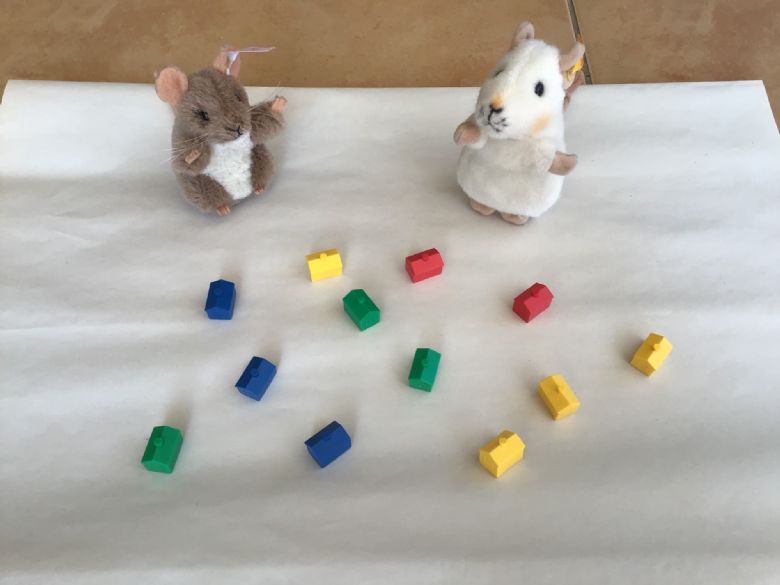
Mickey Thompson and Purvis have 12 counters. They want to work out the number sentence 12 ÷ 2 =
They can either share the counters between the 2
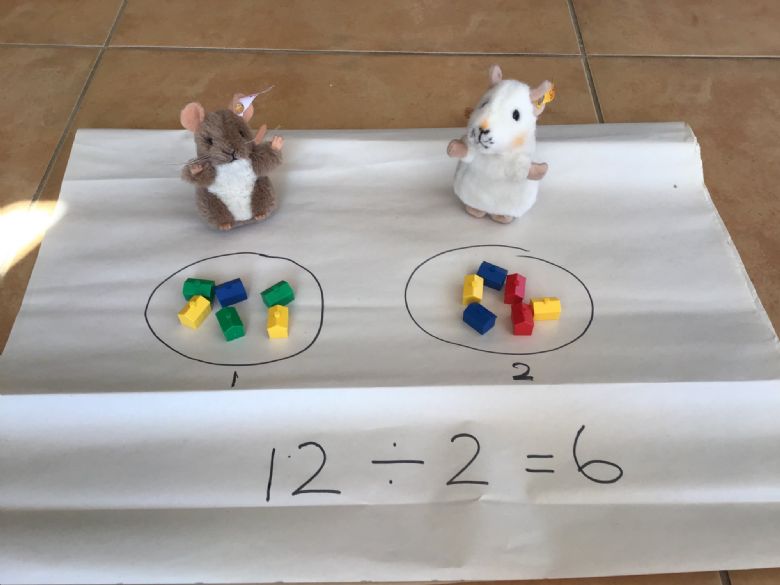
or they can work out how many groups of 2 counters they have.
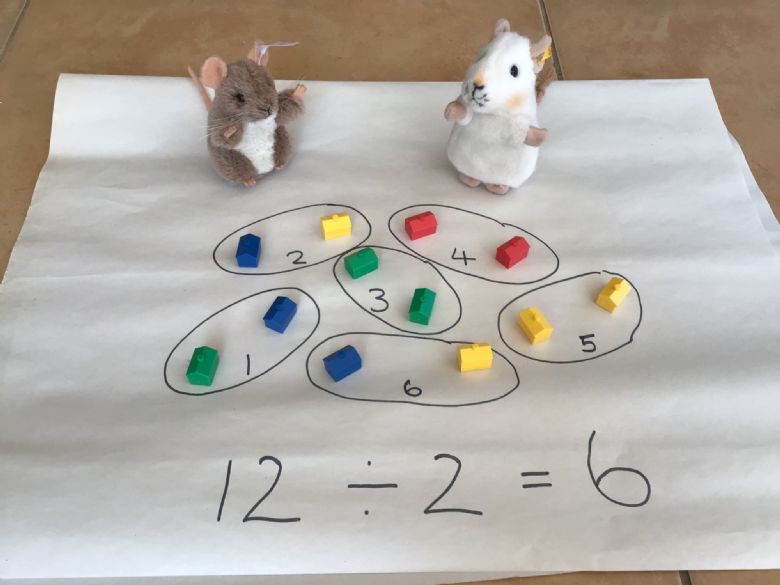
The answer is the same! 12 ÷ 2 = 6
Grouping is also a good method because if we can count in 2s, 5s and 10s like we practised last week it can help us work out the answer.
Take a look at the powerpoint below to practise working out some divisions using the grouping method.
Parents - you may find it easier to print off some of the slides for your child to have a go at.
There are some fluency and problem solving sheets attached below to practise division by grouping. There are two different levels to choose from.
Best wishes
Mrs Lightfoot (and Purvis and Mickey Thompson)
